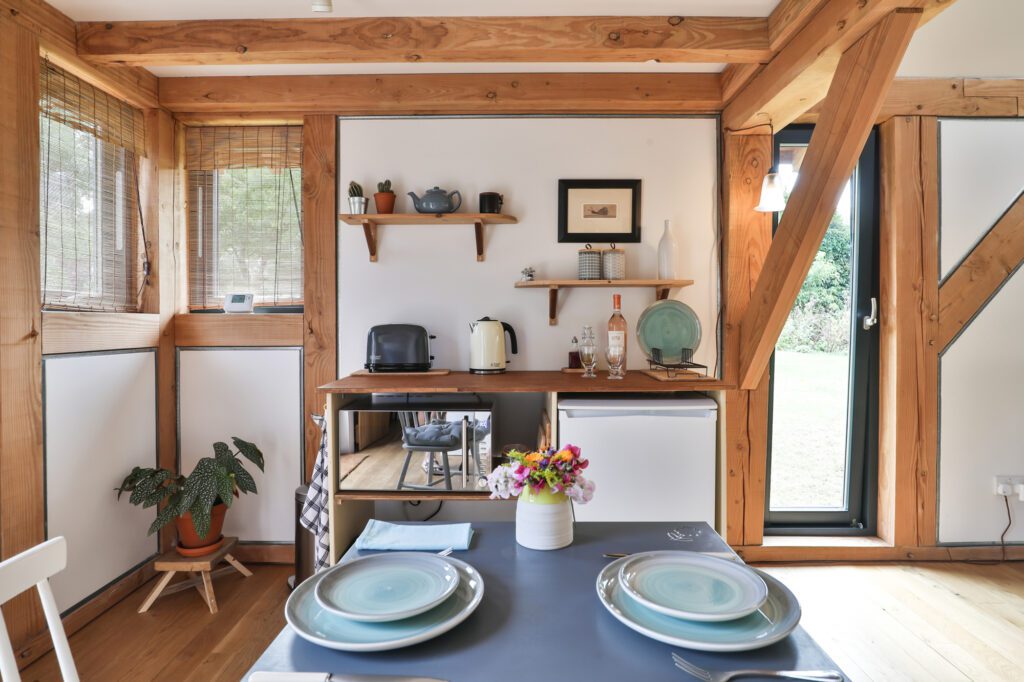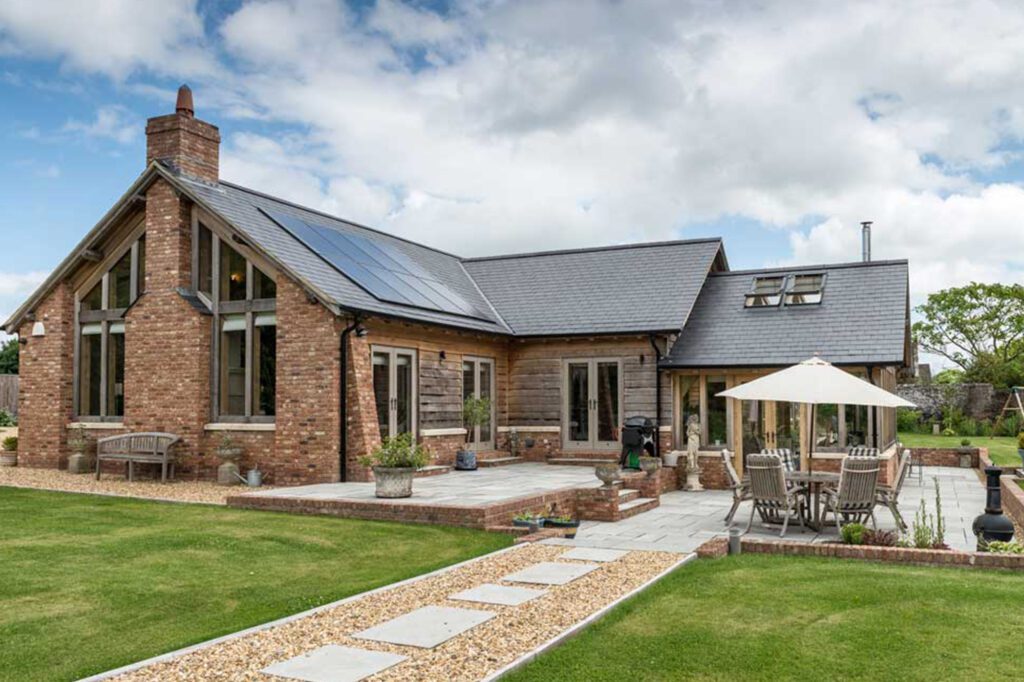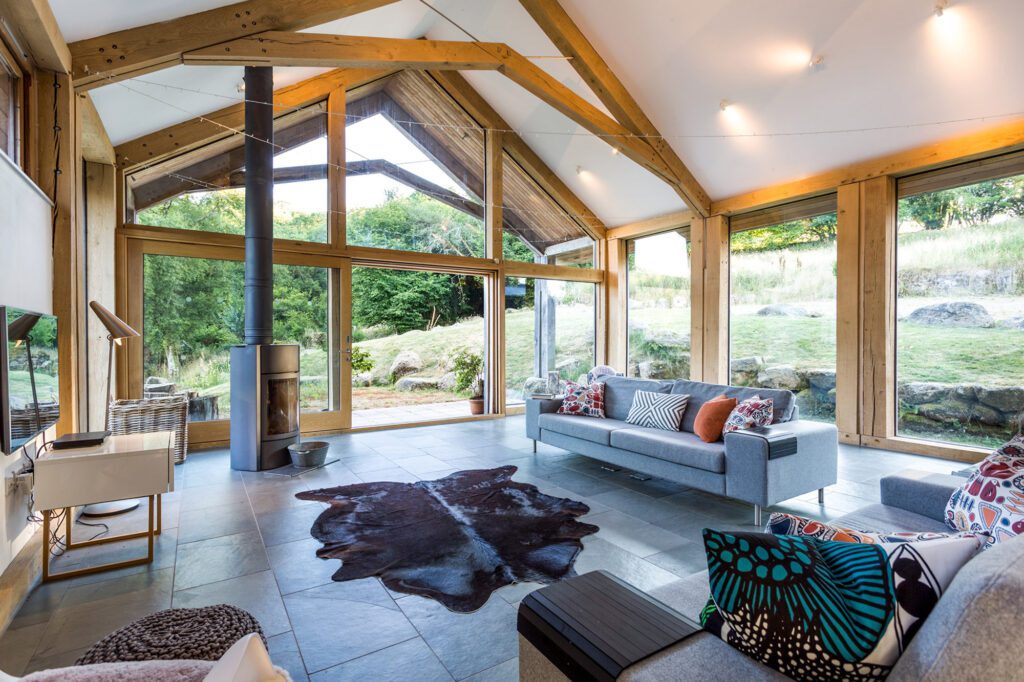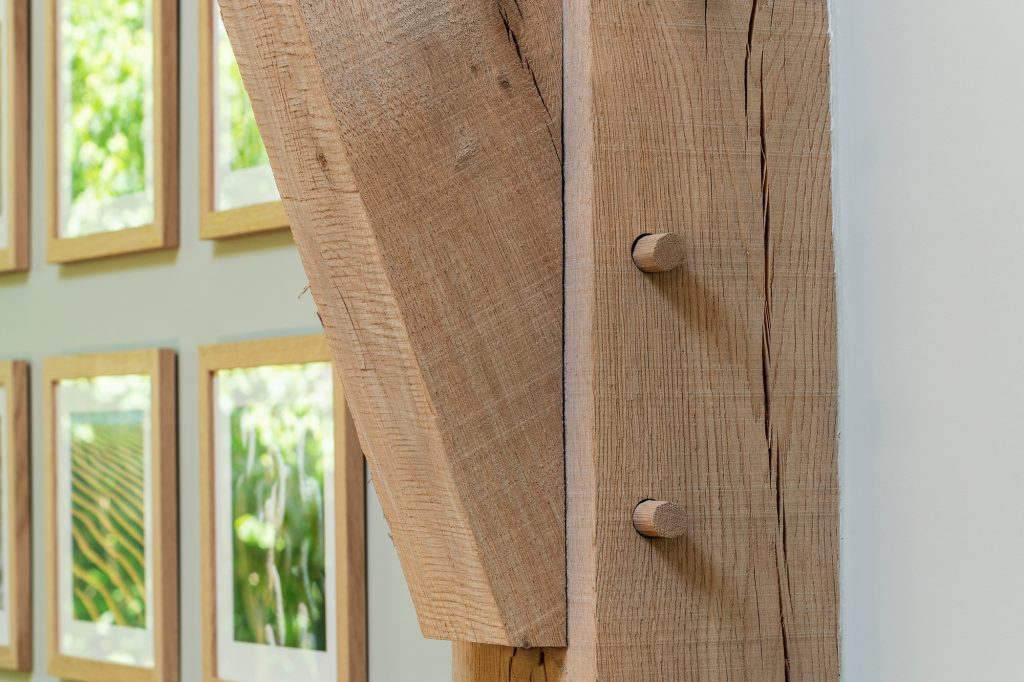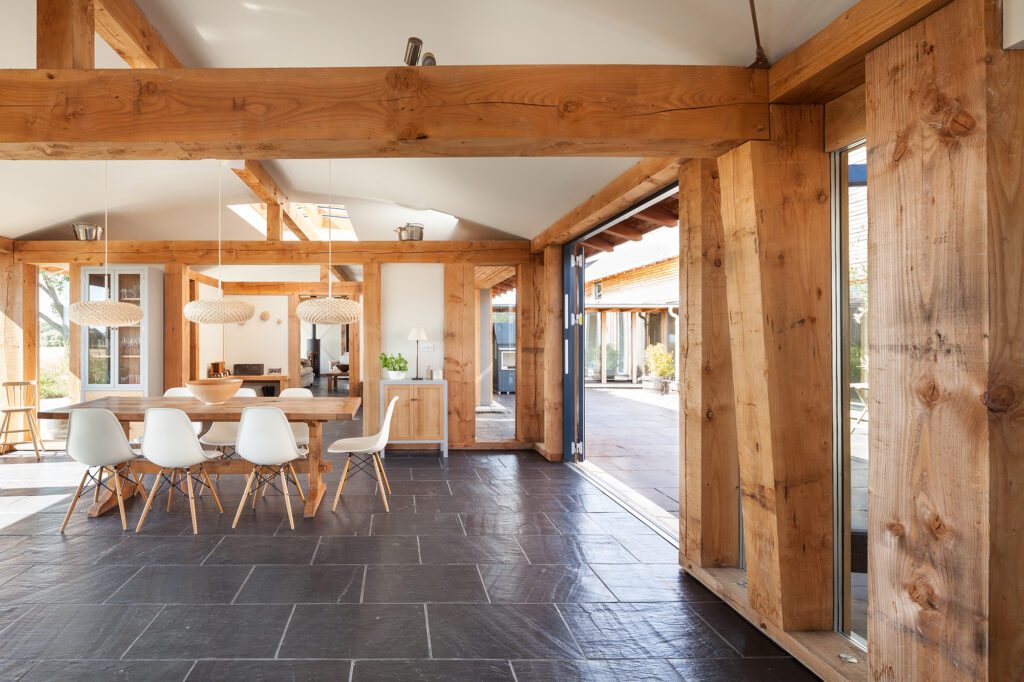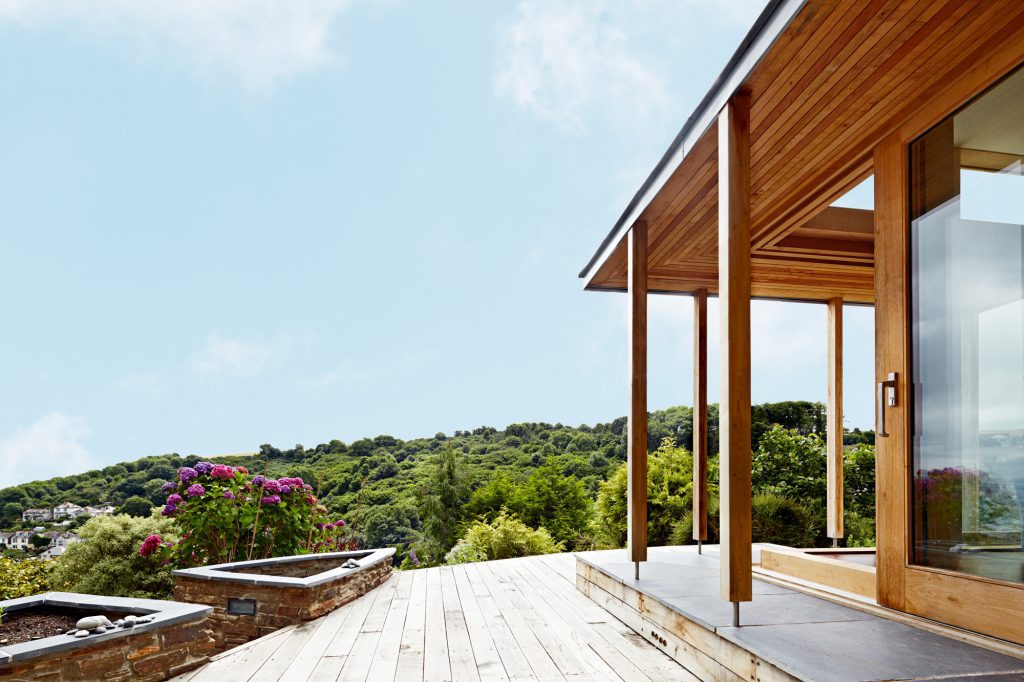We’re often asked “How much do timber frame homes cost?” or “What’s the cost per m2 to build a timber or oak frame home, extension, garden room, orangery, garage or other building?”
Building with structural timber can, but doesn’t always, cost more than building with bricks or other materials, but hardwoods such as oak offer longevity, character, and far more sustainable credentials.
The cost also incorporates the experience and very specialist carpentry skills needed to handcraft oak and other timbers (you can witness these skills first-hand at either of our yards), as well as the technical and expert knowledge specific to designing and engineering oak frames (like our team of frame designers).
And don’t forget – as well as the frame being the structural skeleton of your building, you also benefit from having a beautiful material visible and a part of your new space. It immediately adds character, warmth, and endless interior design possibilities.
So how much does an oak frame home cost?
This will vary, depending on your procurement route (e.g. turnkey, self manage or self-build), but when building a house or large extension with a structural oak frame we suggest budgeting somewhere in the region of £2000 – £3000 per sqm (+ VAT for an extension). This suggested budget is for the total build* and the oak frame would typically comprise 20 – 25% of this cost (this could be lower – perhaps down to 10% of the cost – if you’re building with a partial frame, or the frame is only in part of the building).
If you’re project managing it yourself or doing a lot of self-building this total build cost can be lower.
Another thing to consider is that a house has a 0% VAT rate (as opposed to extensions which are charged at 20% VAT rate).
How much does an oak frame extension cost?
If you’re thinking about a smaller oak frame extension, oak frame orangery or oak frame garden room the costs are somewhere in the region of £2500 – £3500 per sqm for the total build*. A 20% VAT rate will be added to this.
Extensions are generally in ‘high value’ areas of the house like the kitchen and will usually always include elements which are expensive for example bi-fold doors or a lot of glazing. There’s also the fact that adding an extension onto a building can be a complicated process and therefore has some high costs associated with it.
Are there cheaper alternatives to oak?
You may be thinking about other types of timber – it’s not just about oak frame costs.
Douglas fir is typically cheaper, but if it’s kiln dried it quickly becomes the same cost as oak.
Glulam (glue laminated timber) ranges in cost, depending on what type of timber it is made up of, for example, oak glulam is more expensive than spruce glulam.
Different materials offer different benefits and you can find out more about the advantages of oak, Douglas fir, glulam, larch and cedar.
- Green oak
- Douglas fir
We hope that may have helped outline how much timber frame homes cost and how various materials and processes impact the cost. If you’ve got any questions about timber frame home or timber frame extension costs, please get in touch.
*The total build includes everything from foundations to your finished fixtures and fittings. It doesn’t include any fees associated with architectural design, surveying and planning, or cost of plot. All build budgets should also have around another 10% of the total build budget as a contingency in case of the unexpected.
